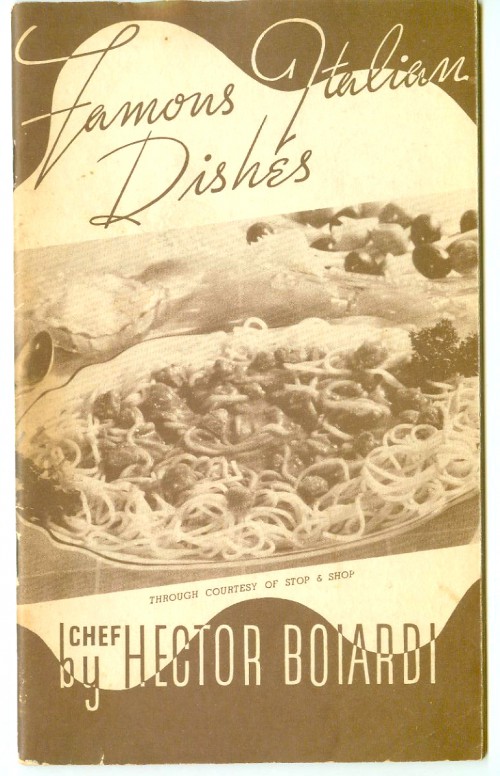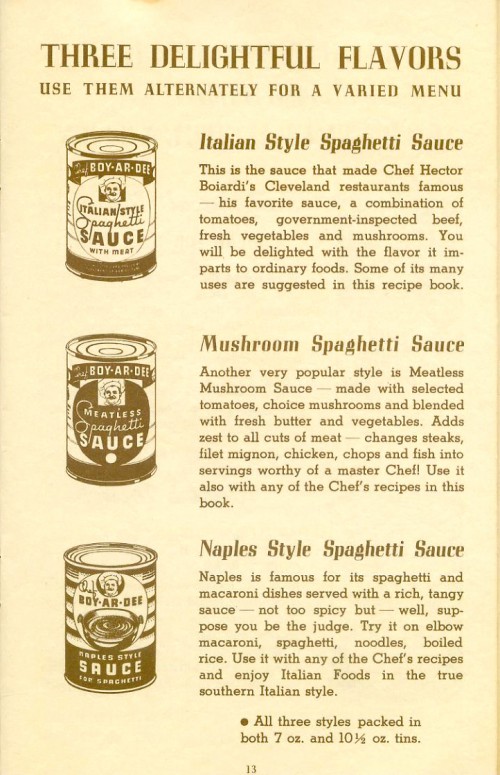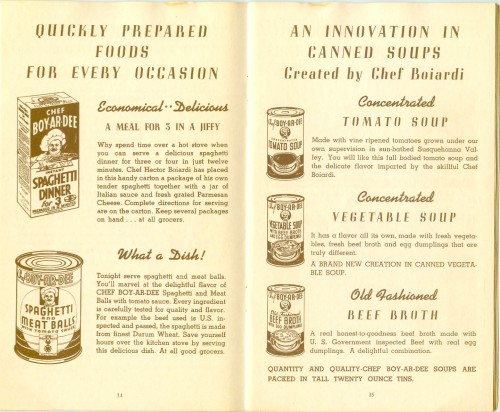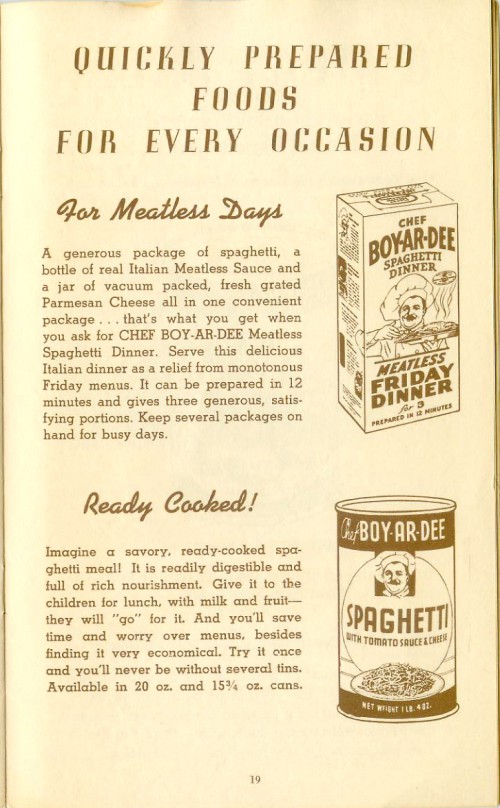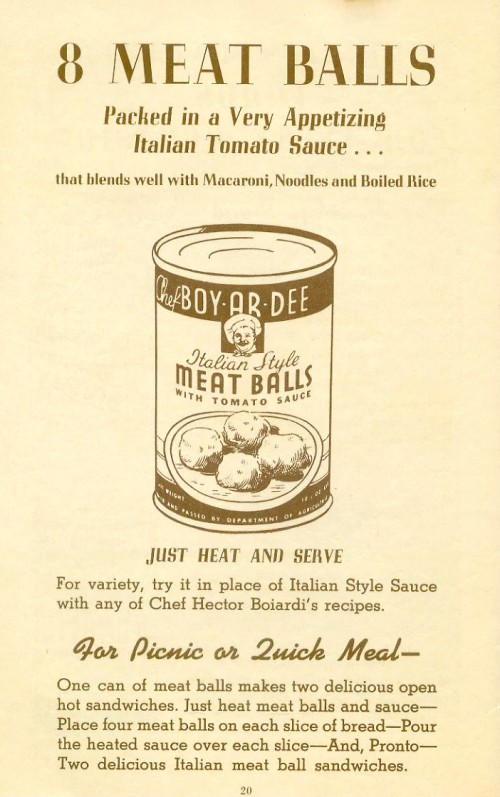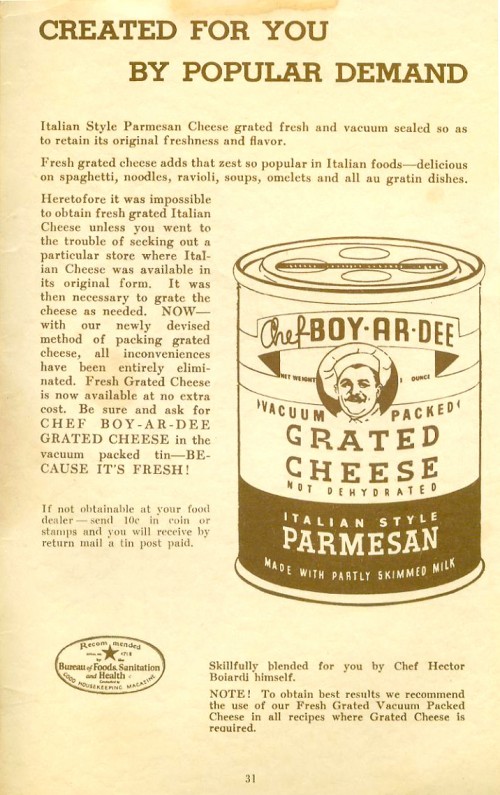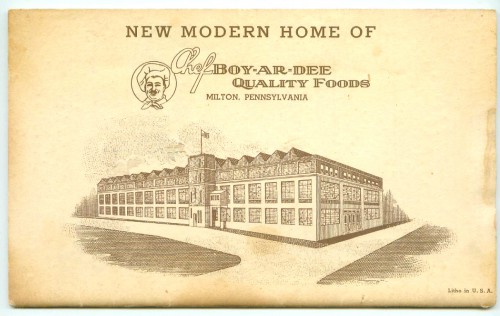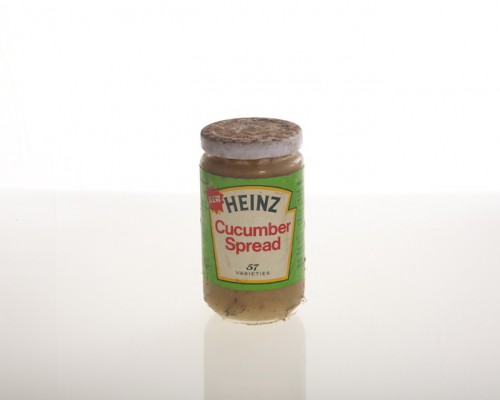Scans from a vintage Chef Boyardee cook booklet titled Famous Italian Dishes, by Chef Hector Boiardi (Through Courtesy of Stop & Shop) with Recipes tested and approved by The Chef Boy-ar-dee Housewife, Lois Nichols.
Along with recipes & biographical info on Boiardi himself, there are illustrations for products which have perished, long ago… Even if you do still find items with this packaging in grandma’s pantry, they’ve perished. Do. Not. Eat.
Also in the booklet, photos of the manufacturing operations at the “modern plant” in Milton, PA.
No date; I believe it’s from the 30s. The whole book is printed in a sepia-toned brown on off-white paper, not black on white.
